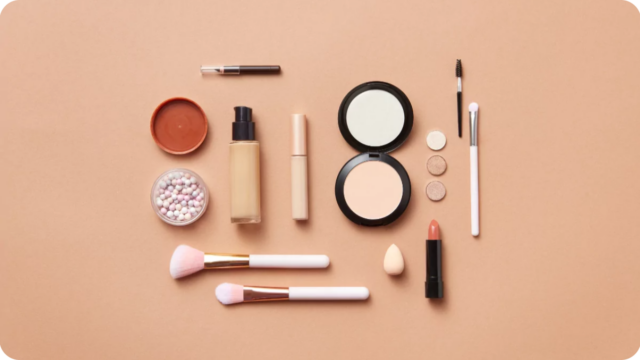Is the Beauty Industry Recession Proof?

The beauty industry has long claimed that it is recession proof, unaffected by a down economy, and able to escape inflation trends. But has the higher cost of living affected consumer’s ability to buy and how do brands become “recession proof” to maintain their market position?
To break this down further, I became curious to see if consumers are inclined to switch to a more affordable brand or if are they gravitating to a product that promises a bigger, better solution. Beauty advertisers certainly continue to spend, reaching $1.2B in 2022 with only a 5% decrease in spend month on month. Compare this to Retail advertising which saw a 42% downward shift month on month. (Ref: Media Radar).
With this spend in mind, and perhaps based on my own purchasing habits, I had believed that consumers will always find the means to buy their favorite lipstick or eyeliner. It’s the quick fix, the feel good factor, and a relatively inexpensive luxury. In 2022, however, NIQ research showed that consumers from the lowest incomes had reduced their dollar spend by 3% over a 12 week period. (Ref. Nielsen IQ).
So how and why do beauty brands stay ahead? To answer this question, we looked at beauty advertisers who advertised over the last two years. The common thread with both established and newer brands alike is how they communicate with their customer and the devices they chose to advertise through. While Meta and Google have become increasingly less profitable for many companies, CTV and traditional linear TV are fast becoming the new levers to pull. This direct–to–consumer approach has allowed a number of benefits, from its’ ability to tell a story via video, to visualization of the product and its’ benefits, to allowing the consumer to directly engage and transact with the brand. Traditional linear television is a highly effective mass reach and scalable performance vehicle for consumers 35 years +, while CTV/ OTT/ Streaming allows for behavioral targeting within a 18-55 years demographic. Both tactics are measurable advertising vehicles allowing for attribution to the client’s KPIs.
This agile approach has allowed beauty brands to react to timely data and adjust based on campaign performance, allocating money to the best performing stations and tactics. As we move through 2023, our ability to use data to react and innovate is key. This approach has allowed the leading brands to stay ahead of the competition and hold strong in turbulent times.
Nicky de la Salle is the Vice President of Growth at DirectAvenue. With more than 20 years of experience, including a decade at a “Big 6” global agency, in performance marketing and growth strategy, she is a proven senior leader with specializations in omni-channel marketing, eCommerce and digital marketing channels. Nicky has driven the performance marketing vision for Fortune 500, Entrepreneurs and Tech-Disupters alike both in the US and internationally.
#globaltrends #economicoutlook #advertising #video #streaming #economy #tvviewership #omnichannelmarketing #lineartv #ctv #ctvadvertising #videoadvertising #streamingtv #directavenue #tvconsumption #viewership #viewershiptrends #advertising #programmingtrends #brandresponse #performancemarketing #performanceadvertising #video #recessionproof #recession2023 #beautyadvertising

